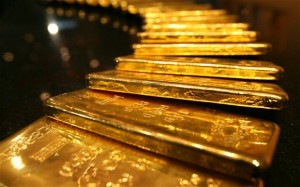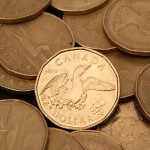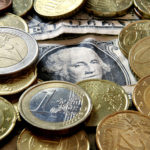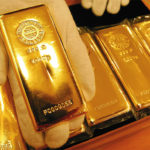 Gold traded little changed on Tuesday, after it advanced the most in almost three weeks, as investors weighed the prospects of further Fed stimulus cuts against reduced physical demand from China. Assets in the SPDR Gold Trust, the biggest bullion-backed ETF, remained unchanged on Monday, after rising for two days in the best string of increases since December 2012.
Gold traded little changed on Tuesday, after it advanced the most in almost three weeks, as investors weighed the prospects of further Fed stimulus cuts against reduced physical demand from China. Assets in the SPDR Gold Trust, the biggest bullion-backed ETF, remained unchanged on Monday, after rising for two days in the best string of increases since December 2012.
On the Comex division of the New York Mercantile Exchange, gold futures for settlement in April traded little changed at $1 259.40 per troy ounce by 08:03 GMT, losing 0.04% for the day. Prices touched a session high at $1 260.80 per troy ounce, while day’s low was touched at $1 255.90 an ounce. Yesterday the yellow metal advanced by 1.3%, the most since January 23rd.
Gold futures settled the 5-day period 2% lower, snapping five consecutive weeks of gains, the longest rally since September 2012. The yellow metal advanced 3.4% in January as MSCI All-Country World Index of equities plunged 4.1% amid concern that a slump in emerging markets may worsen. However, gold settled last year 28% lower, the steepest annual decline since 1981 as investors lost faith in the metal as a store of value and amid speculation Fed will continue scaling back its monetary stimulus throughout 2014.
Chinese demand
On the Shanghai Gold Exchange, trading volumes for bullion of 99.99 percent purity fell on January 30th to the lowest since June 2011. Markets in China are closed through the period ended February 6th.
According to data by the World Gold Council, China probably overtook India as the largest global consumer in 2013.
Fed stimulus outlook
Gold drew support yesterday, after the US Institute for Supply Management (ISM) reported its manufacturing index declined to the lowest level in seven months in January, due to a slump in new orders.
The report revealed that the manufacturing index stood at 51.3 in January, down from Decembers reading of 57.0, while analysts had projected that the index will slow down to 56.0 in January. Data also showed that new orders plunged at the fastest pace since December 1980, as the new orders index declined to 51.2 in January from 64.4 in the previous month. Most of the companies cited the bad US weather conditions last month as the main reason for the decreased number of new orders.
However, the yellow metal continued to be pressured after overall positive US data raised concerns that the Federal Reserve will keep cutting stimulus throughout the year.
According to data by Thomson Reuters in cooperation with the University of Michigan, released on Friday, their gauge of consumer confidence for the United States came in at a final reading of 81.2 in January, which outstripped experts’expectations pointing to a value of 81.0 and also the preliminary reading of 80.4, released on January 17th. The final value of the index of consumer sentiment stood at 82.5 in December.
The US Department of Commerce reported on Thursday that consumer spending rose by 3.3% in the fourth quarter, marking the highest advance in three years. The data was preliminary and it came after a 2% increase in the previous quarter, while analysts had expected consumer spending will rise 3.7% in Q4. Consumer spending is regarded as a key component of US Gross Domestic Product as it accounts for almost 70% of the economy.
A separate report by the US Bureau of Economic Analysis revealed the preliminary gross domestic product of the country increased 3.2% in the fourth quarter, in line with analysts’ forecasts. The US economy expanded at 4.1% in the prior three months, which was the fastest pace since the first quarter of 2010.
Gold prices were pressured last Wednesday, as Fed policy makers reached an unanimous decision to cut Fed’s monthly bond purchases for a second straight meeting by another $10 billion. This was the first meeting without dissent since June 2011 as policy makers were brought together by concern over Fed’s swelled balanced sheet which raised risks of asset bubbles.
The Federal Open Market Committee said it will further trim the central bank’s Quantitative Easing program based on improving labor market conditions and as economic growth accelerated in the recent quarters.
The Federal Reserve kept its tone that it will most likely hold its target interest rate near zero even after unemployment drops below 6.5%, especially if inflation remains well beneath policy makers’ long-term goal of 2%.
The central bank will probably continue to pare stimulus by $10 billion at each policy meeting before exiting the program in December, according to a Bloomberg News survey of 41 economists, conducted on January 10th.
Assets in the SPDR Gold Trust, the biggest bullion-backed ETP, remained unchanged at 793.16 tons for a second day on Monday, after rising for two days in the best string of increases since December 2012. The fund has lost 41% of its holdings in 2013. A total of 553 tons has been withdrawn in 2013. Billionaire hedge-fund manager John Paulson who holds the biggest stake in the SPDR Gold Trust told clients on November 20 that he wouldn’t invest more money in his gold fund because it isn’t clear when inflation will accelerate.





